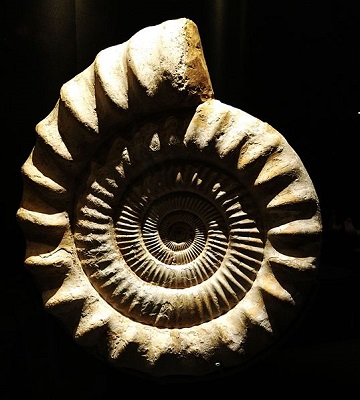421316-Ammonite.jpg

Ammonite from the Milan natural history museum. Credit: Wikipedia, L. Shyamal
It’s been 65 million years since the last ammonites died off. Yet these creatures are whispering to geologists, helping them determine the ages of layers of rock that could be up to 200 million years old.
Ammonites were relatives of modern-day squid and octopuses. But unlike those creatures, the ammonite lived inside a beautiful shell. The shell usually formed a coil, although some shells were straight or shaped like a helix.
The shells consisted of several chambers. As the ammonite grew, it built new, bigger chambers to hold it, and sealed off the old ones. It could fill the older ones with water or gas, allowing it to move up or down in the ocean — something that’s similar to another modern-day relative, the nautilus.
The first ammonites appeared more than 200 million years ago. The last vanished with the dinosaurs, when a giant asteroid slammed into Earth. So ammonite fossils appear in layers of rock that span about 150 million years.
In the 1850s, two scientists realized that the fossils were good tools for dating those layers, as well as any other fossils they might contain. That’s because there were many different species of ammonite, each with a distinctive shell. Ammonites evolved quickly, so some species would vanish and others would appear over a short time span. And ammonites were found all across the planet. So ammonite fossils can allow geologists to date a rock layer to within a couple of hundred thousand years — a mere blink of an eye in Earth’s long history.

